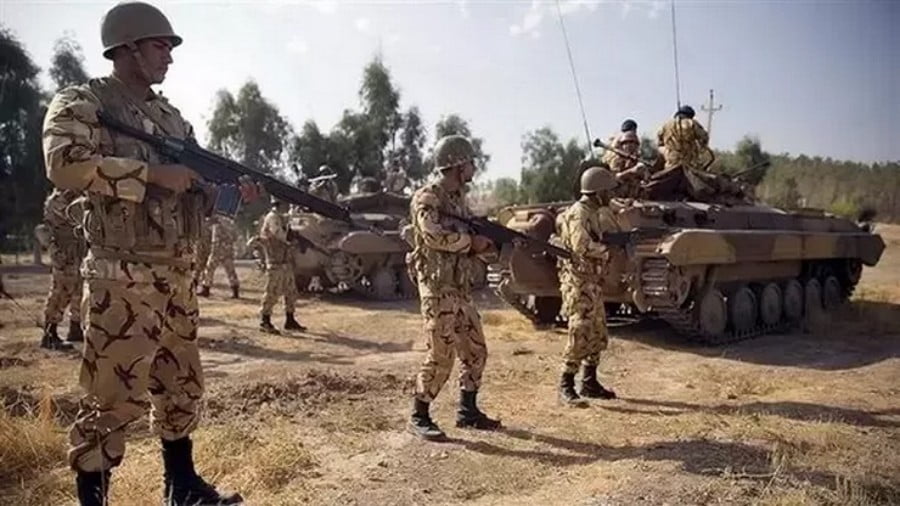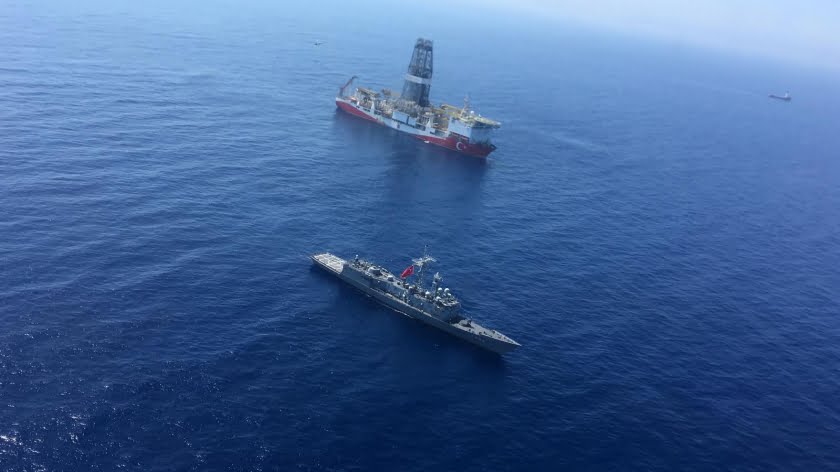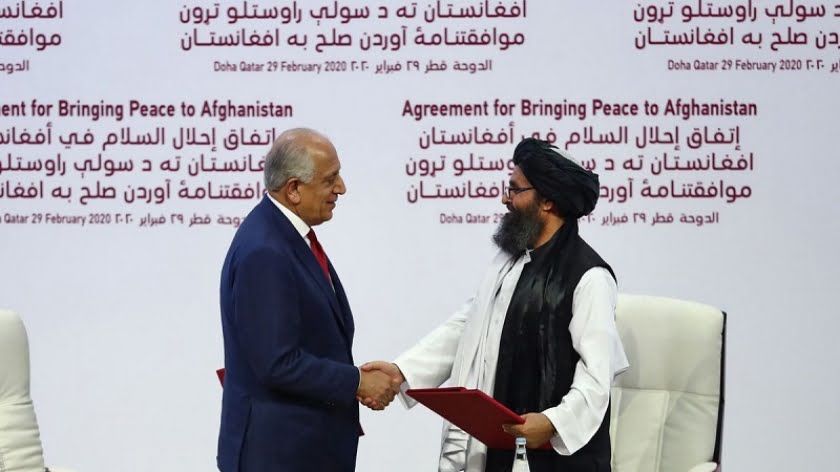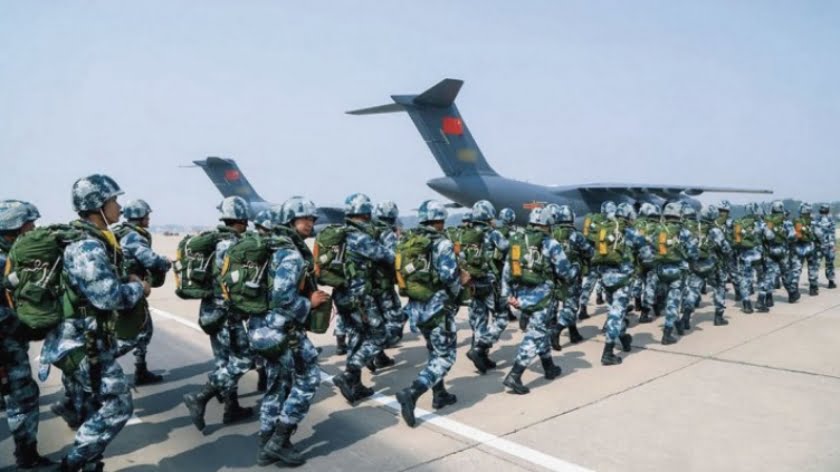Iran is Fighting Tooth and Nail for Its Positions in Iraq and Syria
The fact a couple Russian military advisors together with dozens of Syrian soldiers have recently perished in the Deir ez-Zor area indicates the United States together with its allies carries on with preparations to cast a decisive blow in southwest Syria, aimed at cutting off Iranian forces from their allies. Damascus has this far been able to survive the onslaught unleashed by the West due the existence of the so-called Euphrates corridor which stretches from Iran across the whole of Iraq, to Syria. This corridor hasn’t just been a vital source of weapons and munitions for the Syrian government, but has allowed Iran to send fresh reinforcements to Syria.
However, Russia’s ongoing military presence in Syria has proven an insurmountable obstacle to US plans forcing Washington to make further use of terrorist organizations including those fighting under the ISIS banner. These militants have withdrawn from the outskirts of Damascus and Yarmouk to establish a base of operations deep inside territory controlled by the Pentagon and pro-American Kurdish militants of the so-called SDF.
The Pentagon seeks to avoid a direct military confrontation with the Russian Federation. In addition to the presence of Russian military advisers in various parts of Syria, Deir ez-Zor has been defended by a large number of pro-Iranian foreign proxies, mainly members of the Fatimiyun Brigade from Afghanistan, several units of Zeynabiyyun volunteers from Pakistan and regularly rotated Shia detachments from Iraq.
In total, Iran has feilded well over 120,000 militants in Syria. A quarter of this force is made up of Lebanese Hezbollah, while the rest is formed out of several dozen different Shia groups from across the region – from Yemen to Pakistan. Naturally, the Islamic Revolutionary Guard Corps is responsible for supplying these groups, as it maintains command over all Iranian and pro-Iranian proxy forces in Syria. A number of shifts in the course of the Syrian conflict allowed Iran to increase its military presence in Syria from 40,000 men in 2015 to well over 120,000 men today. Previously, it was supply routes that hindered Iran’s capabilities to fight radical militants effectively, which resulted in Iranian General Qasem Soleimani requesting Russia to become more directly involved in Syria. He achieved this goal by persuading Turkey to allow Russia to construct sections of the so-called Turkish Stream pipeline to eliminate Moscow’s dependence on lines running across Ukraine. It should be noted that Soleimani is an extremely intelligent man who wields enormous personal ties across the region, which means that he was in the position to ensure that Moscow and Ankara came to the rescue of Bashar al-Assad, effectively saving his government from imminent defeat back in 2015.
The rapid expansion of control over territories previously occupied by terrorist fronts resulted in Iran finding itself in a position to establish supply lines to Syria, while rapidly increasing the number of troops deployed. But the supply problem remains acute: Iran stations two large groups in northern Syria, with one controlling Aleppo, while the second occupies the Damascus area, providing cover for Hezbollah infrastructure. It goes without saying that it’s a challenging task to supply these groups via the ports of Tartus and Latakia and by land routes along the Euphrates River through Deir ez-Zor. However, the above mentioned ports are under Russian control and most of the time they are busy unloading Russian vessels that are delivering supplies and munitions to the Russian Air Corps in Syria.
Therefore, the path along the Euphrates is of pivotal importance for Iran. This path allows Tehran to transport the phosphates produced in Syria, which serves as a payment for the assistance it provides to Syria. Therefore, Russia’s military presence in Deir ez-Zor serves the task of assiting Iran in the matter of controlling this single land supply route it has. Without the Russian military presence, Iranian detachments in Syria can be quickly wiped-out by nearby US-Kurdish forces.
It has become clear that this anti-Iranian coalition aims at cutting off supply lines between Iran and Syria by striking this land route. Should they succeed, even large pro-Iranian detachments will be starved off and destroyed. The future of Syria may pivot on the safety of this supply line, which exists within the most vulnerable strip of land that Tehran controls. Therefore, all moves along the left bank of the Euphrates are aimed at the expansion of pro-Washington controlled zones around the above mentioned supply line, and have little if nothing to do with the actual control of the local oil and gas fields.
As of now, we are observing a kind of a stand-still in Syria, filled mostly with local events that are more tactical in nature. This includes the liquidation of militant enclaves in Eastern Ghouta, East Qalamoun, Yarmouk, and Al-Rastan. This pause is most likely taken to allow for preparations ahead of the next phase of this war, in which Iran will become the main target of a large coalition of Israel, GCC states and a number of other Arab states, and quite possibly Turkey.
US actions are in preparation for this clash: a friendly coalition is being created, with Turkey being played into joining in exchange for additional territory in northern Syria. Apparent Russian-Iranian “accords” are of little concern for the US: in spite of this recent cooperation in Syria, there are more contradictions between Moscow and Tehran than mutual interests.
At least politically, in the event of a broad coalition attacking Iran, Russia will adhere to full neutrality.
There’s little doubt that Iran is going to be attacked from several directions at once – in Syria, Yemen and Iraq. In Syria, these attacks will target the essential land route along the Euphrates followed by air strikes against infrastructure serving the Islamic Revolutionary Guard Corps in Aleppo and Damascus. In fact, this will be enough to create a critical threat to the supply of the Iranian detachments in Syria, after which the whole defense line can collapse within just six months, a similar scenario following what almost occurred in 2015 before the arrival of the Russian military. While Iran is aware of impending attacks in Syria much of its attention is focused on Iraq – particularly around the formation of the new government. This is where General Qasem Soleimani spends most of his days and is part of plans for Iranian counteractions.
Despite elections being won a communist bloc and Muqtada al-Sadr, the latter has two serious challenges that may hinder his possible success. The first problem is the unparalleled charisma of Sadr himself – there is practically no one in his bloc who can exercise the same authority he does, but Sadr has refused to be nominated as Prime Minister, instead retaining the position of a spiritual leader. Therefore, he can form a government only in a bloc with some other party, having failed to secure the needed majority during the elections to create a government on his own. The second problem is the principle of filling quotas within the Iraqi parliament. There’s quotas for Kurds and Sunnis, which has left Iran engaged in various activities on several fronts. Soleimani is meeting representatives of the leading Kurdish parties in Iraq in a bid to form a coalition out of these forces that will embrace the sitting Prime Minsiter Haydar al-‘Abadi, former Prime Minister Maliki and the Dawlat Al-Qanun bloc, along with the commander of the pro-Iranian elite group Shaabi and the leader of the Fatah coalition, Hadi al Ameri. In the event of Soleimani succeeding in his quest, Sadr will find himself isolated, perhaps in a bloc with a number of smaller parties.
The question of who is going to prevail in this struggle is a serious one, because even now the punitive detachments of the Hashd al-Sha’bi and Badr groups, now notorious for atrocities committed against the Sunni population in the struggle for the liberation of Iraq from ISIS, have made it clear that should a pro-Iranian government be formed, they will move most of their units to Syria. But this cannot happen until a stable government capable of finalizing ISIS’ defeat is in place. Iran intends to create a new system and a new factor that will strengthen its position in Syria by assembling groups, consisting of criminal and semi-criminal elements gathered from the whole region, and strengthened by the Iraqi punitive detachments before being sent to war. With these forces, Iran will be in position to resist the attempts to destroy its supply lines in Syria. Short of a full-scale war, it will not be possible to push these Iraqi forces out of Syria. And under these circumstances, there’s hardly any chance that anybody will risk going to war against Iran.
Therefore, al-Sadr is unsuccessfully trying to get Soleimani out of Iraq, understanding the threat posed by his shuttle diplomacy. The Iranian general is too influential however, to be ousted by a well-known, but still provincial politician. Naturally, Soleimani’s activities are visible to all. It is also clear that Saudi Arabia, Israel and the United States do not intend to sit idly by. They too are making preparations in Iraq, as well as taking even more indirect steps in other regions – in particular, Yemen, aimed at counteracting Iran. The war in Syria is now evolving into a major regional conflict with several points of varying intensity. To play this game, for Russia, is financially and politically unsustainable due to its current limited resources. Therefore, Moscow is distancing itself from what is unfolding, which if its final analysis is correct, may lead to the loss of its positions in the region, including its military bases in Syria.







